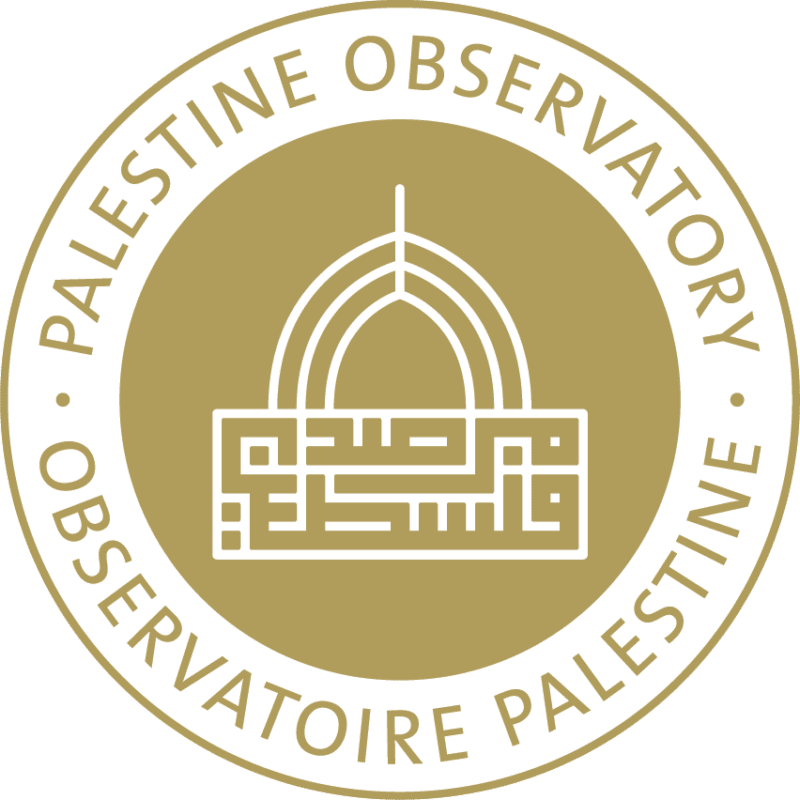Nine children murdered, injured, and arrested; four mosques attacked in the West Bank

Israeli occupation vehicles during their invasion of Palestinian cities. Photo from WAFA
Ramallah, November 18, 2025
The suffering of displaced people in the Gaza Strip increased with the arrival of winter, and their tents were flooded due to rains during the period of November 11-17, 2025, while the occupation forces continued their violations of the ceasefire agreement through their aerial and artillery bombardment of various areas in the Gaza Strip. The Israeli strikes included the Shuja’iyya and Daraj neighborhoods, the east of Gaza City, the east of Khan Yunis, the south of Al-Mawasi, scattered areas in the city of Rafah, and the east of Beit Lahia, in addition to extensive demolition operations of buildings in Rafah.
The OIC Media Observatory on Israeli Crimes Against Palestinians documented 309 Palestinians murdered and 43 injured across various Palestinian areas during the past week. Israeli occupation forces killed six Palestinians in the Gaza Strip, while Civil Defense teams recovered 19 bodies from under the rubble. The Ministry of Health documented 279 Palestinians murdered during the Israeli aggression on the Gaza Strip, in addition to 13 injured. The total number of Palestinians murdered between October 7, 2023, and November 17, 2025, reached 70,566, with 179,842 injured.
On the other hand, The Economist magazine confirmed that the Gaza Strip may contain the largest number of unexploded bombs in the world, posing a significant threat to the lives of hundreds of thousands of Gazans.
Last week, Israeli occupation forces conducted 295 incursions into the West Bank, killing five Palestinians and injuring 30 others. Among those murdered were four children, two were injured, and three were arrested. Additionally, the Al-Malih school in Tubas was attacked over four days, during which settlers smashed the school’s windows, destroyed its security cameras, and attempted to break down its gate. The occupation forces demolished 6 houses and several residential facilities, occupied 4 houses, a car showroom, five barns, agricultural facilities, a park, filled in a water collection well and a number of water tanks, bulldozed agricultural lands, uprooted hundreds of olive trees, and issued orders to uproot olive trees on an area of 8,000 square meters in the vicinity of the eastern region of Qalqilya.
Israeli occupation forces confiscated 38 dunams of land in the town of Beit Ummar in Hebron, and 5,137 dunams in Qalqilya, with the aim of building a fence around the area. They also confiscated land in the town of Tuqu’ near the settlement of Tekoa, for the purpose of paving a road. In Qalandiya village, they evicted residents from their homes and agricultural lands in preparation for establishing a solid waste treatment facility for the benefit of the occupation. They also confiscated four bulldozers, a vehicle, cash, and gold jewelry from Palestinian individuals.
Regarding attacks on places of worship, Israeli forces stormed the Bab al-Rahma Islamic cemetery adjacent to the eastern wall of the Al-Aqsa Mosque compound, desecrating a number of graves. They closed the Ibrahimi Mosque to worshippers to allow settlers to perform Talmudic rituals. Settlers set fire to the Hajja Hamida Mosque near Salfit and wrote racist slogans on its walls. They also broke down the door of the Beit al-Sheikh Mosque in the town of Beit Furik in Nablus. Settler attacks in the West Bank reached 83, including 14 attacks on the olive harvest season. Settlers stormed an industrial zone in the town of Beit Lid, near Tulkarm, setting fire to agricultural land, four trucks, three vehicles, a water tanker, bales of hay, a food storage facility, and tents. They also smashed factory windows, causing the death of 13 sheep and injuring three Palestinians.
Settlers also demolished a residential tent, destroyed crops, and grazed their livestock on several plots of land, damaging crops on approximately 50 dunams. They set fire to agricultural land and olive trees, plowed fields, uprooted olive trees, trampled livestock with their horses in Tubas, killing several animals, and cut down 400 avocado trees in Jenin. Settlers also burned two cars in the Jerusalem area, vandalized two other vehicles, and stole iron bars and agricultural equipment.
The number of settlement criminal activities in one week reached 11, during which the occupation authorities paved a road near the town of Beit Duqqu in Al-Quds (Jerusalem), for the benefit of building a new settlement outpost. Settlers bulldozed lands in the village of Jalud in Nablus, with the aim of expanding a new settlement outpost, and lands in the vicinity of Bethlehem to pave a settlement road. They plowed lands in Halhul, in Jericho, and others amounting to 250 dunams in Tubas after they had fenced them off. They also fenced off lands owned by the Latin Patriarchate and Palestinian individuals east of the Tayasir checkpoint in Tubas in order to seize them. They also fenced off the perimeter of lands belonging to the town of Taybeh in Al-Quds (Jerusalem), and set up a tent and built a room on lands in the town of Sa’ir. They set up two tents on lands in the vicinity of Qalqilya and uprooted olive trees. They cut down olive trees near the town of Aqrabah in the vicinity of a settlement outpost, and seized two caves in Masafer Yatta in Hebron. The number of crimes in the various Palestinian regions reached 1169 crimes, encompassing various categories of crimes.
